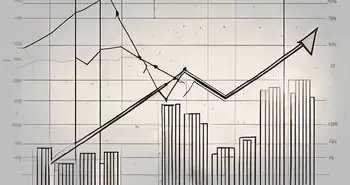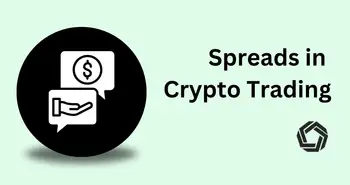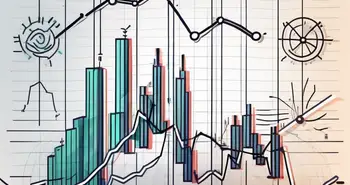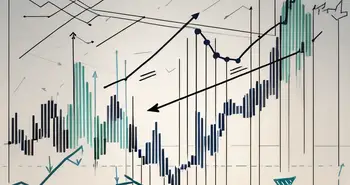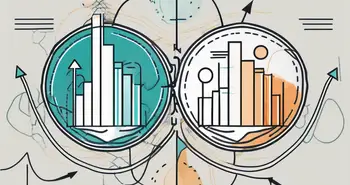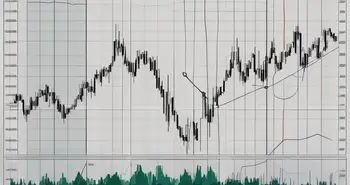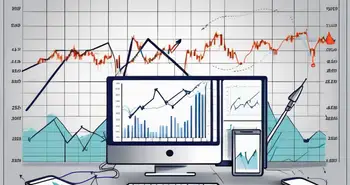What Does Bid and Ask Price Mean in Investing?
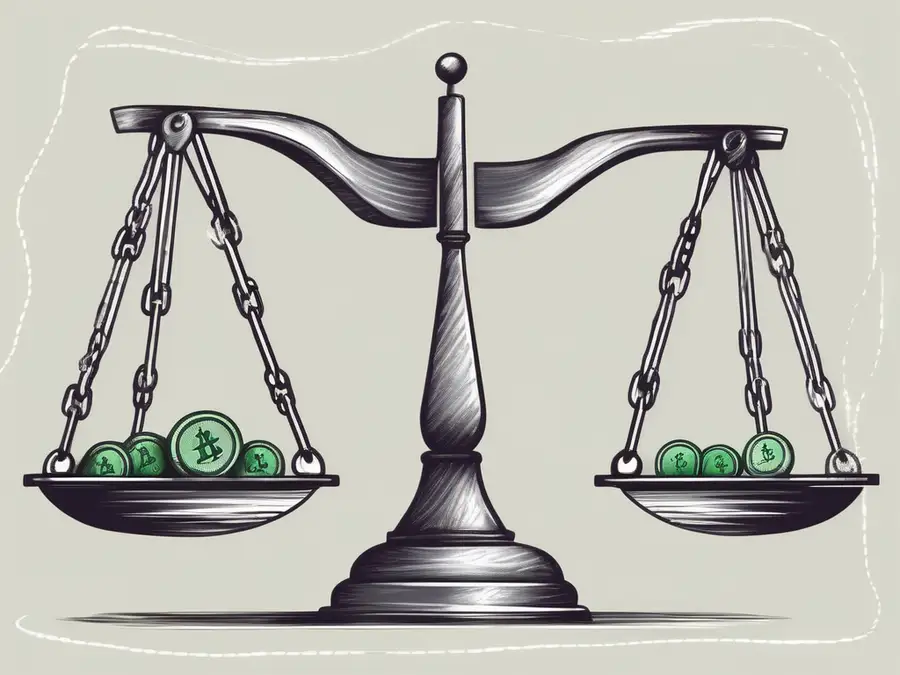
As an experienced trader, I know that understanding bid and ask prices is crucial for successful trading. In this article, I will explain what bid and ask prices are, their importance in trading, how they determine market trends, and strategies for navigating them effectively. So, let's dive in and demystify the world of bid and ask prices!
Defining Bid and Ask Price
Before we delve into the intricacies of bid and ask prices, let's define what they are. In simple terms, the bid price is the maximum price a buyer is willing to pay for an asset, while the ask price is the minimum price a seller is willing to accept.
Understanding bid and ask prices is fundamental to grasping the dynamics of trading in financial markets. The bid price, often referred to as the buying price, is crucial for traders looking to enter a position in a particular asset. It essentially represents the highest price that a buyer in the market is currently willing to pay. This price level is significant as it influences the market sentiment and can impact the overall price movement of the asset.
The Role of Bid Price in Trading
The bid price plays a pivotal role in trading as it represents the demand side of the market. When you, as a trader, want to buy a particular asset, you will place an order with a bid price. This bid price indicates your willingness to buy that asset at a certain price.
Moreover, the bid price is a key component in determining the bid-ask spread, which is the difference between the highest price a buyer is willing to pay (bid) and the lowest price a seller is willing to accept (ask). A narrower bid-ask spread typically indicates higher liquidity in the market, making it easier for traders to execute their orders at desired prices.
The Role of Ask Price in Trading
On the flip side, the ask price represents the supply side of the market. Sellers set their ask price to indicate the minimum price they are willing to sell their assets for. As a trader, when you want to sell an asset, you will set an ask price for potential buyers to consider.
Similar to the bid price, the ask price also plays a crucial role in market dynamics. It is often referred to as the selling price and signifies the lowest price at which a seller is willing to part with their asset. The ask price, along with the bid price, forms the basis of the pricing mechanism in financial markets, allowing for price discovery and efficient trading.
The Importance of the Bid-Ask Spread
The bid-ask spread is the difference between the bid and ask prices. This spread is crucial because it represents the transaction cost and profitability of a trade. The narrower the spread, the more liquid and cost-effective the market is for trading.
Understanding the bid-ask spread is essential for investors and traders looking to navigate financial markets effectively. It serves as a key indicator of market efficiency and can provide valuable insights into supply and demand dynamics within a particular asset class.
How the Bid-Ask Spread Impacts Trading
When the bid-ask spread is tight, it becomes easier for traders to enter and exit positions without incurring significant costs. A tight spread reflects a liquid market where buying and selling can be executed seamlessly.
Moreover, a narrow bid-ask spread can also signal market stability and investor confidence in the underlying asset. This confidence can lead to increased trading activity and enhanced price discovery mechanisms, benefiting market participants seeking fair and efficient transactions.
Conversely, a wide bid-ask spread can make it challenging to execute trades, especially for high-volume or less-liquid assets. This wider spread can eat into a trader's potential profits and increase the overall cost of the trade.
Factors Influencing the Bid-Ask Spread
Several factors affect the bid-ask spread, including market volatility, trading volume, the depth of the market, and the asset's liquidity. Understanding these factors is essential for traders to make informed decisions and anticipate potential spread fluctuations.
For example, during times of high market volatility, the bid-ask spread tends to widen as buyers and sellers are more cautious, resulting in increased price discrepancies between bids and asks.
Additionally, the role of market makers and electronic communication networks (ECNs) can also impact the bid-ask spread. Market makers play a vital role in providing liquidity and narrowing spreads, while ECNs facilitate trading by matching buy and sell orders from various market participants.
The Process of Buying and Selling in Trading
Now that we have covered the basics of bid and ask prices, let's explore how they determine trading decisions and the role of market makers.
How Bid and Ask Prices Determine Trading Decisions
As a trader, bid and ask prices provide important information for making trading decisions. When the bid price matches or exceeds the asset's intrinsic value, it may be a good time to buy. Conversely, when the ask price falls below the asset's value, it might be an opportune moment to sell.
By carefully analyzing bid and ask prices, traders can identify potential profit opportunities, assess market conditions, and implement sound trading strategies.
The Role of Market Makers in Setting Prices
Market makers play a vital role in facilitating trading by providing liquidity and setting bid and ask prices. They ensure there is always a willing buyer or seller in the market, narrowing the bid-ask spread and enhancing market efficiency. Their presence helps maintain a liquid market, making it easier for traders to engage in buying and selling.
Additionally, market makers absorb some price risk by being willing to buy or sell an asset at their quoted prices, thus contributing to market stability.
Strategies for Navigating Bid and Ask Prices
Now that you have a better understanding of bid and ask prices, it's time to explore strategies to navigate this dynamic aspect of trading.
Tips for Understanding and Utilizing Bid and Ask Prices
1. Monitor bid and ask price trends: Keep a close eye on how bid and ask prices fluctuate to identify patterns or opportunities in the market.
2. Place limit orders: Use limit orders to specify the maximum price you're willing to pay or the minimum price you're willing to accept. This allows you to control the price at which your trades are executed.
3. Consider market depth: Evaluate the market depth, which reveals the number of buy and sell orders at various bid and ask prices. It can indicate the level of interest in a particular asset and potential price movements.
Common Mistakes to Avoid When Dealing with Bid and Ask Prices
1. Neglecting the bid-ask spread: Ignoring the bid-ask spread can lead to significant costs and reduced profitability. Always consider the spread before executing trades.
2. Failing to adapt to changing market conditions: The bid-ask spread is not static and can vary based on market factors. Stay updated on market conditions to make informed decisions and adjust your strategies accordingly.
The Impact of Bid and Ask Prices on Market Trends
The bid and ask prices not only affect individual trades but also provide valuable insights into overall market trends.
How Bid and Ask Prices Reflect Market Sentiment
When bid prices are consistently higher than ask prices, it indicates strong demand and bullish market sentiment. Conversely, if ask prices surpass bid prices, it suggests weak demand and bearish sentiment.
By monitoring bid and ask prices across multiple assets, traders can gauge market sentiment and make better-informed decisions.
The Relationship Between Bid-Ask Prices and Market Volatility
Market volatility often leads to wider bid-ask spreads due to increased uncertainty and risk. This relationship arises because traders adjust their bid and ask prices to account for the higher potential for price fluctuations during volatile periods.
Understanding this relationship can help traders anticipate spread widening and adjust their trading strategies accordingly.
FAQs
What are bid and ask prices?
Bid price is the maximum price a buyer is willing to pay for an asset, while ask price is the minimum price a seller is willing to accept.
What is the bid-ask spread?
The bid-ask spread is the difference between the bid and ask prices. It represents the transaction cost and profitability of a trade.
How do bid and ask prices impact trading decisions?
Bid and ask prices provide crucial information for making trading decisions. When bid prices exceed a asset's value, it may be a good time to buy, and when ask prices fall below the asset's value, it may be an opportune moment to sell.
What role do market makers play in setting bid and ask prices?
Market makers provide liquidity, narrowing the bid-ask spread, and enhancing market efficiency. They absorb price risk by being willing to buy or sell assets at their quoted prices.
How can I effectively navigate bid and ask prices?
Effective navigation involves monitoring bid and ask price trends, using limit orders, and considering market depth. Additionally, avoiding common mistakes and adapting to changing market conditions are crucial for successful trading.
What do bid and ask prices reveal about market trends?
Bid and ask prices reflect market sentiment, with bid prices higher than ask prices indicating bullish sentiment and vice versa. Wider bid-ask spreads during market volatility suggest increased uncertainty and risk.
As an experienced trader, understanding bid and ask prices is critical for success. By grasping the role they play in trading decisions, the impact of the bid-ask spread, and strategies for navigating these prices, you can make informed choices and seize profitable opportunities. Happy trading!
Ready to elevate your trading experience? Join Morpher, the revolutionary platform that harnesses blockchain technology to redefine investing. With zero fees, infinite liquidity, and the ability to trade a vast array of assets from stocks to NFTs, Morpher is the perfect partner for savvy traders like you. Embrace the future of trading with fractional investing, short selling without interest fees, and up to 10x leverage. Sign up now at Morpher.com and claim your free sign-up bonus to start trading on a platform as innovative as your strategies. Don't just trade, transform the way you trade with Morpher.

Disclaimer: All investments involve risk, and the past performance of a security, industry, sector, market, financial product, trading strategy, or individual’s trading does not guarantee future results or returns. Investors are fully responsible for any investment decisions they make. Such decisions should be based solely on an evaluation of their financial circumstances, investment objectives, risk tolerance, and liquidity needs. This post does not constitute investment advice.

Painless trading for everyone
Hundreds of markets all in one place - Apple, Bitcoin, Gold, Watches, NFTs, Sneakers and so much more.

Painless trading for everyone
Hundreds of markets all in one place - Apple, Bitcoin, Gold, Watches, NFTs, Sneakers and so much more.

